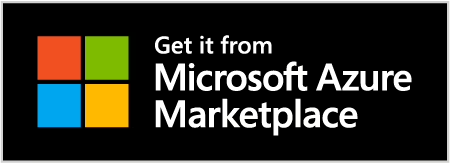How many tools does it take to release with confidence? If your answer is “more than one,” you’re paying a premium in licenses, silos, and cycle time. This guide shows how to consolidate Web, Mobile, API, and RPA automation into a single platform—reducing total cost of ownership while increasing velocity and quality. We’ll outline the business case, an enterprise reference architecture, a 90-day rollout plan, and the KPIs your C‑suite will care about. Explore ZAPTEST to see how a one-tool approach accelerates delivery.
The cost of tool sprawl in 2025
Most enterprises grew their toolchains organically. The result: separate tools for web UI, mobile, APIs, and RPA—each with its own skills, scripts, infrastructure, and reporting. The hidden costs include:
- Duplication of effort: Similar flows scripted multiple times across channels.
- Fragmented governance: Inconsistent standards and access controls.
- Slow feedback: Multiple dashboards mean slower defect triage and decision-making.
- Higher flakiness and maintenance: Parallel frameworks drift and demand constant care.
Enter a unified platform: one repository, one execution fabric, one analytics layer. Customers routinely report double‑digit reductions in cycle time and maintenance effort after consolidation because assets are reused across channels instead of rebuilt.

What “one tool” really means for QA and Ops
“One tool” is more than marketing: it’s a shared operating model across digital and back‑office automation.
- Model‑based, object + vision automation: Create resilient scripts for web and mobile, including legacy or canvas apps via computer vision and OCR.
- API‑first testing: Validate contracts, mocks, and end‑to‑end flows that mix UI and API layers.
- RPA for repetitive ops: Automate environment setup, data seeding, and business processes using the same toolchain as test automation.
- Reusable libraries: One asset library drives web, mobile, API, and RPA flows to maximize reuse.
- AI‑assisted authoring: Natural‑language prompts generate steps and data sets; humans govern. See how ZAPTEST Copilot accelerates script creation while preserving standards.
- Enterprise‑grade scale: Run tests and bots in parallel on a grid, on‑prem or cloud, with fine‑grained scheduling and autoscaling.
Reference architecture: unifying Web, Mobile, API, and RPA
A pragmatic reference architecture for a one‑tool strategy includes:
- Design & authoring: Codeless and code‑optional editors, shared object repository, data‑driven and keyword‑driven patterns.
- Execution fabric: Agent grid for browsers, devices, services, and RPA workers; parallelization and scheduling; secrets management.
- Integration: CI/CD hooks (e.g., Jenkins, Azure DevOps, GitLab), issue trackers, chat, and change management systems.
- Observability & Analytics: Central dashboards, video replays, logs, and trend analytics across channels.
- Governance & Security: Role‑based access, SSO/SAML, audit trails, asset versioning, and policy controls.

 A pragmatic 90‑day rollout plan
A pragmatic 90‑day rollout plan
Start small, scale fast, and prove ROI during the first quarter.
- Days 0–30: Establish the baseline. Inventory flows, pick a cross‑channel pilot (web + API + one mobile flow), define KPIs (lead time, failure rate, flakiness, maintenance hours), connect CI/CD, and stand up the execution grid.
- Days 31–60: Expand and standardize. Add two more mobile platforms and RPA use cases (test data creation, environment checks). Build reusable libraries and coding standards; turn on AI‑assisted authoring with human review.
- Days 61–90: Scale and govern. Parallelize suites for nightly and on‑commit runs, enforce RBAC and reviews, publish dashboards to product and ops leadership, and launch a lightweight Center of Excellence.
KPIs that prove value to the C‑suite
- Lead time for change: Commit to deploy cycle time.
- Change failure rate: Percentage of releases causing incidents or rollbacks.
- Mean time to detect/repair (MTTD/MTTR): Speed of feedback and fix.
- Automation coverage: Critical user journeys covered across web, mobile, API, and RPA.
- Flakiness rate: Intermittent failures per 100 runs—trend should decline after consolidation.
- Cost per execution: Infra + license + support divided by runs; should improve with one grid and shared assets.
Present these KPIs on a single dashboard to align engineering and business stakeholders. ZAPTEST surfaces cross‑channel analytics in one place, enabling faster root cause analysis and capacity planning.

Build vs. integrate: how to evaluate platforms
Most organizations don’t need to build a bespoke framework from scratch. Instead, evaluate vendors against your stack and operating model:
- Coverage: True support for major browsers, iOS/Android, REST/SOAP/GraphQL, and desktop/legacy via vision.
- Resilience: Object identification that survives UI churn; self‑healing where appropriate with human oversight.
- Developer experience: Codeless for business users, code‑optional for SDETs, and APIs/CLIs for pipelines.
- Scalability: Elastic execution grid and robust concurrency management.
- Security & compliance: SSO/SAML, audit logs, data masking, and alignment to your compliance regime.
- TCO: Consolidated licensing and infrastructure; predictable pricing that scales with usage.
Buyer’s checklist for true cross‑platform automation
- “Script once, run anywhere” across web, mobile, API, and RPA.
- Unified repository, version control, and review workflows.
- Parallel execution at scale with centralized scheduling.
- AI‑assisted authoring with guardrails and auditability.
- First‑class CI/CD integrations and infrastructure as code support.
- Enterprise security (RBAC, SSO, secrets, audit) and governance.

Risks, mitigations, and governance
- Risk: Adoption stalls. Mitigation: Start with a high‑value pilot and publish weekly KPI deltas to leadership.
- Risk: Flakiness migrates, not vanishes. Mitigation: Invest in stable locators, test data provisioning, and environment health checks via RPA.
- Risk: AI‑generated tests drift from standards. Mitigation: Enforce review workflows, naming conventions, and tagging.
Conclusion
Consolidating web, mobile, API, and RPA automation into one platform is a force multiplier: fewer tools, faster releases, and clearer accountability. If you’re ready to reduce cycle time and maintenance while increasing coverage and confidence, explore a one‑tool strategy now. Talk to ZAPTEST about unifying your automation stack and accelerating outcomes.



 A pragmatic 90‑day rollout plan
A pragmatic 90‑day rollout plan

